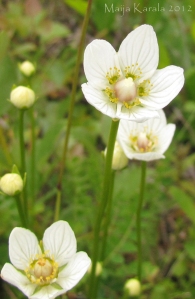 Lapland holds a special place in the hearts of many Finnish people. There are dozens of songs and poems, books and paintings about its beauty and magic. Thousands of people travel to this cold, barren land on their holidays, sparing no expense. What on Earth is so wonderful in there?
Lapland holds a special place in the hearts of many Finnish people. There are dozens of songs and poems, books and paintings about its beauty and magic. Thousands of people travel to this cold, barren land on their holidays, sparing no expense. What on Earth is so wonderful in there?
I have been captivated by Lapland for as long as I can remember, but I still have no idea why. Because I’m a penniless student, I haven’t been able to visit since the start of my university years. Last summer I finally got the chance and am no longer perplexed why naturalists – including Carl von Linné – tend to love Lapland.
In a way, Lapland is a land of past beauty. The fells were once the highest mountains to have ever risen on this planet, but now they are round little hills, pensively looking down to valleys filled with their own rubble. Their height now is only a fifth of what it was when their snowy peaks rose to more than ten kilometers.
Scandinavian Mountains rose during the cataclysmic events that broke apart the supercontinent Pangaea, starting 400 million years ago. At the time, no fish with limbs had yet wandered to dry land. The razor-sharp slopes of young mountains were populated by lichens, moss-like plants and little animals with many legs.
While the mountains slowly eroded, a lot of things happened around them: mosses were taken over by ferns and then conifers. Amphibians crawled the slopes, then lizards, crocodiles and dinosaurs. Pterosaurs soared over them, disappeared and became replaced by birds. To the mountains, forests and glaciers, tundra and grasslands grew and disappeared again in a blink of an eye.
Today, the ancient mountains have fallen asleep and dream of past glory, volcanic eruptions and dinosaurs while water, wind and freezing winters erode them smaller and smaller. Formed of hard Precambrian rock, they are among the oldest redognizable mountain ranges left. The others have long past turned into sand or sank under the oceans.
There are no high peaks or streams of lava left today. The beauty of Lapland is small, rugged and mellow. A 60s book about Kevo Nature Reserve describes a tiny species of moonwort as a plant that can only be found by “lowly and humble people.” I was proud and delighted to find it on my trip.
Maybe the same can be said about the whole landscape. The fells are small and round, the forests are formed of crooked montane birches, hardly taller than a man but very old. Among the trees, there are clear streams of fully drinkable water, mysterious rock piles and meandering footpaths. The sun shines brightly throughout the night. At times, it feels like walking in a fairy tale book.
The ground is covered by tiny grasses and flowers, pushed flat by the harsh climate and barren soil. Who has the patience to look closely, will see exotic species and surprising beauty not found in milder climates.
The petite carnivorous butterwort (Pinguicula vulgaris) colors many humid places with beautiful blue flowers. It also has a smaller and uncommon cousin, the hairy butterwort (P. villosa). It only grows on the edges of mountains streams covered by a specific species of red sphagnum moss. Its tiny, lime green leaves and lavender flowers provide a stark contrast on the moss and shine like jewels – if you look closely enough. The whole plant is hardly as tall as a matchstick, and much more slender.
At their best, the fells are full of flowers. On riverside grasslands one could imagine being a thousand kilometers south, when tall Jacob’s-ladder (Polemonium acutiflorum) forms mist clouds of purest blue and globe-flowers (Trollium europaeum) glow like as many little suns. The moor-king (Pedicularis sceptrum-carolinum) looks particularly out of place with its tall, burgundy stalks carrying pale yellow flowers. The Finnish (“kaarlenvaltikka”) as well as Latin name of this plant means “scepter of Charles”, honoring Charles XI, the king of Sweden at the time the plant was named.
On highest peaks there is no soil to speak of and the cruel winds blow away most snow, leaving the plants to endure the full bite of winter. Even there, plants cling tight on the rocks and stay alive. They grow flat hugging the ground, maybe only a few millimeters per year, and grow their roots deep in the rock crevices. Seemingly tiny plants may be decades-old sturdy trees, if you look closely enough.
These mountaintop plants have thick leaves, almost like desert plants. On the light summer days and nights they carefully rise their tiny flowers towards the sun: the pink of alpine azaleas, pure white of mountain avens and bluish hues of purple saxifrages. Here and there, they flower densely enough to dye the ground. They are pollinated by tiny midges and white moths that make short flights from one flower to another, careful not to get blown away by the ever-present wind.
Orchids are often perceived as exotic plants growing on tree trunks in steaming jungles or high in the cloud forests. One would not expect an orchid in the barren landscape of Lapland. It always feels a bit surprising to find an elegant moorland spotted orchid (Dactylorhiza maculata) or a spicy-smelling fragrant orchid (Gymnadenia conopsea) in these settings. They, and a few other species as well, are apparently unaware of their unconventional locations and are fairly common on the fells.
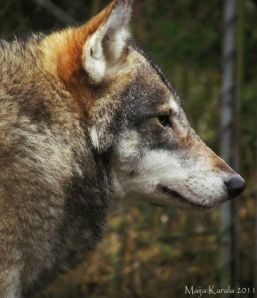 And what about the animals? One might suppose they are as unassuming as the plants, but that’s actually not the case – or at least it didn’t use to be. Reindeer herding and overly eager hunting have changed the land, though. Arctic foxes, wolves and wolverines are all but extinct, and the reindeer that used to provide their living has been turned into a semi-domesticated cattle. The whole Lapland, including national parks, is now turned into a huge pastureland. There are a lot more reindeer than the land can sustain: the thick white carpets of lichen are gone and the animals must be fed with hay during the winter. Even so, the winter is too harsh for many reindeer. It did not take a long walk on the fells to collect and armful of clean, white bones of the ones that did not make it.
And what about the animals? One might suppose they are as unassuming as the plants, but that’s actually not the case – or at least it didn’t use to be. Reindeer herding and overly eager hunting have changed the land, though. Arctic foxes, wolves and wolverines are all but extinct, and the reindeer that used to provide their living has been turned into a semi-domesticated cattle. The whole Lapland, including national parks, is now turned into a huge pastureland. There are a lot more reindeer than the land can sustain: the thick white carpets of lichen are gone and the animals must be fed with hay during the winter. Even so, the winter is too harsh for many reindeer. It did not take a long walk on the fells to collect and armful of clean, white bones of the ones that did not make it.
Starkly decorated with orange and black, the Norway lemming (Lemmus lemmus) is a secret ruler of the land. It is one of the few animals capable of surviving on just mosses and lichens. Even the kilometer-thick glaciers of the last Ice Age were not enough to drive the lemming from its home. The peaks of the highest fells of Norway became nunataks, exposed rocks in the ocean of ice. A few sturdy plants – and the lemmings – seem to have endured the Ice Ages on them.
Summer 2011 saw the first real lemming migration in decades. It must have been a spectacle, since the signs could still be seen in the landscape after a full year had passed. Thousands of little paws had eroded deep pathways into the brushwood. All the little nooks and crannies on the paths were still filled with light brown droppings, and almost everywhere one stood still and looked around, there was a dead lemming in sight. Even during the long winter all the little corpses had not been eaten, even though foxes, rodents and other opportunist scavengers had surely eaten as much as they could. Now the corpses were mostly dried skin and protruding bones. For the next year or two the lemmings will be so rare they could as well be mythical. After that, the population slowly starts growing again, but it might be a long time to the next true lemming migration.
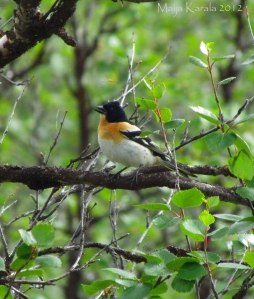 The birds are not just small brown ones either. The Siberian jay (Perisoreus infaustus) is the symbol of Lapland. It’s by far the most colourful corvid in Finland, and known of its intelligence, tameness and curiousity. The bluethroat (Luscinia svecica) sings like a nightingale, but has brilliant colours like a tropical bird. Even the orange-black brambling (Fringilla montifringilla), its feathers mirroring the fur of lemmings, looks a bit out of place in the montane birch forests. The majestetic raven (Corvus corax) is a common sight, though mercilessly persecuted by reindeer herders. It is as intelligent as apes and mates for life.
The birds are not just small brown ones either. The Siberian jay (Perisoreus infaustus) is the symbol of Lapland. It’s by far the most colourful corvid in Finland, and known of its intelligence, tameness and curiousity. The bluethroat (Luscinia svecica) sings like a nightingale, but has brilliant colours like a tropical bird. Even the orange-black brambling (Fringilla montifringilla), its feathers mirroring the fur of lemmings, looks a bit out of place in the montane birch forests. The majestetic raven (Corvus corax) is a common sight, though mercilessly persecuted by reindeer herders. It is as intelligent as apes and mates for life.
Not to even mention the raptors. The large, broad winged rough-legged bustard (Buteo lagopus), the silvery, lighting-fast gyrfalcon (Falco rusticolus) and the fiery-eyed snowy owl (Bubo scandiacus) can only be seen here. Even eagles are not that rare.
One of the most comical situations I have ever witnessed happened in the Kaldoaivi wilderness, Utsjoki, in 2005. A large eagle hastily flew over me, closely followed by a thrush chugging angrily. One single thrush.
With the exception of the wolf and owl (which are from zoos), all photographs in this article were taken in Utsjoki and northern Norway in July 2012.




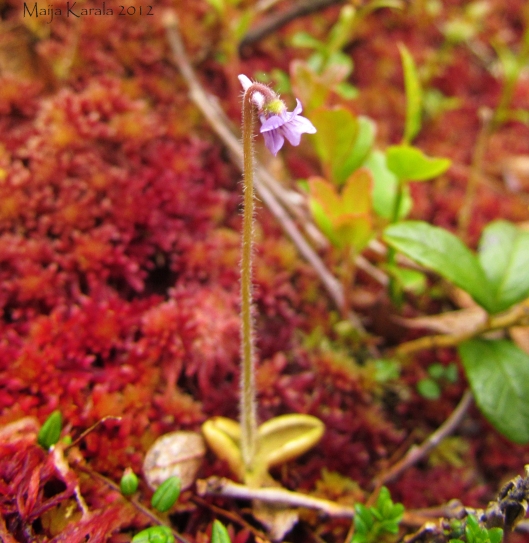
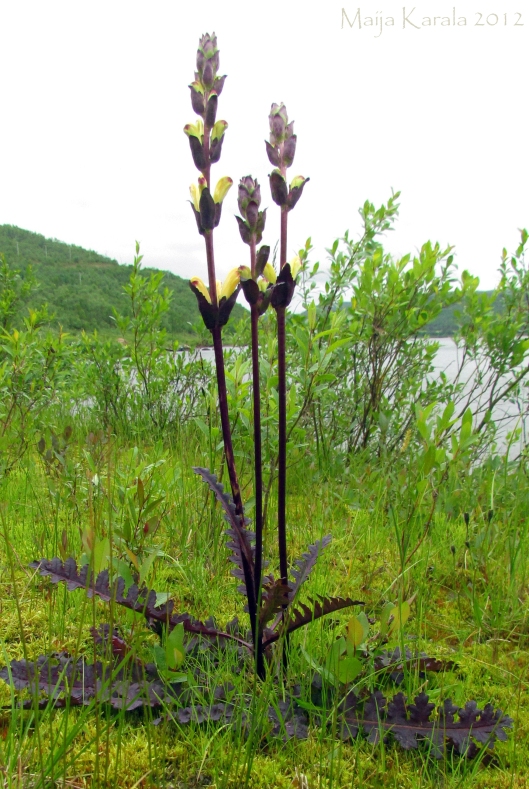
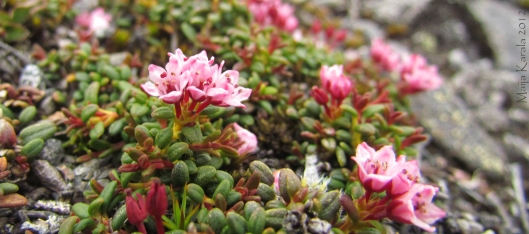
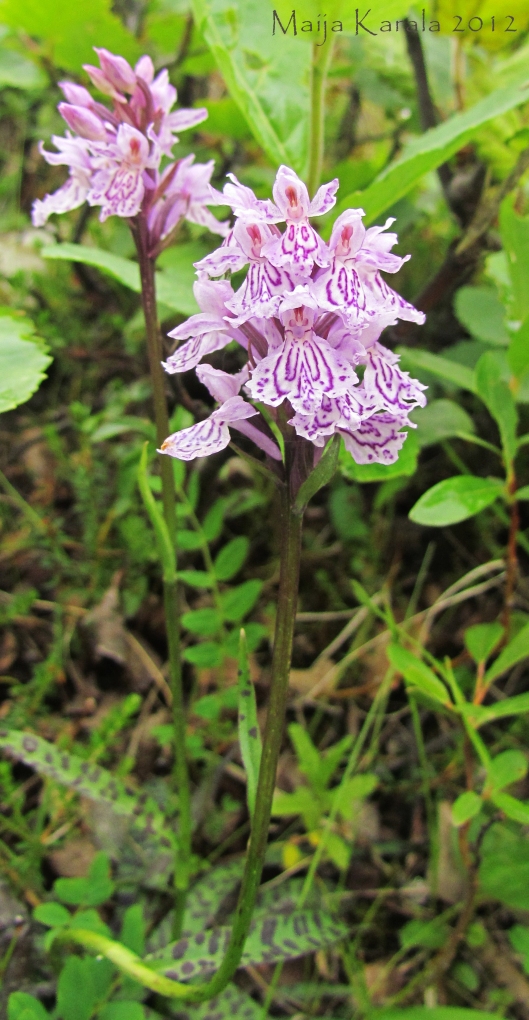
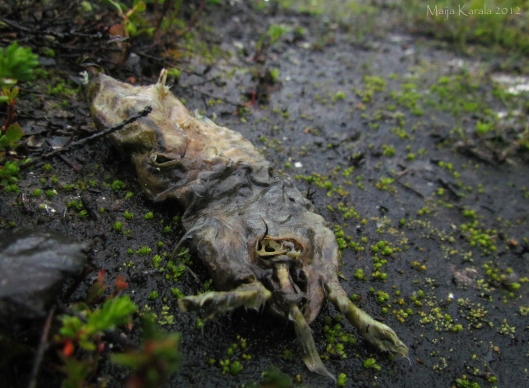
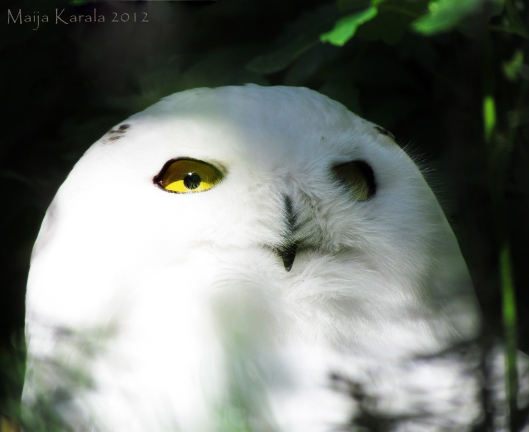
This is absolutely poetic. It’s a lovely portrait of a biome in its many facets.
I love your blog!
Typo notice: “The sun shines brightly [throughout] the night.”
Thank you for the compliment. 🙂 And the typo notice also. Corrected now.